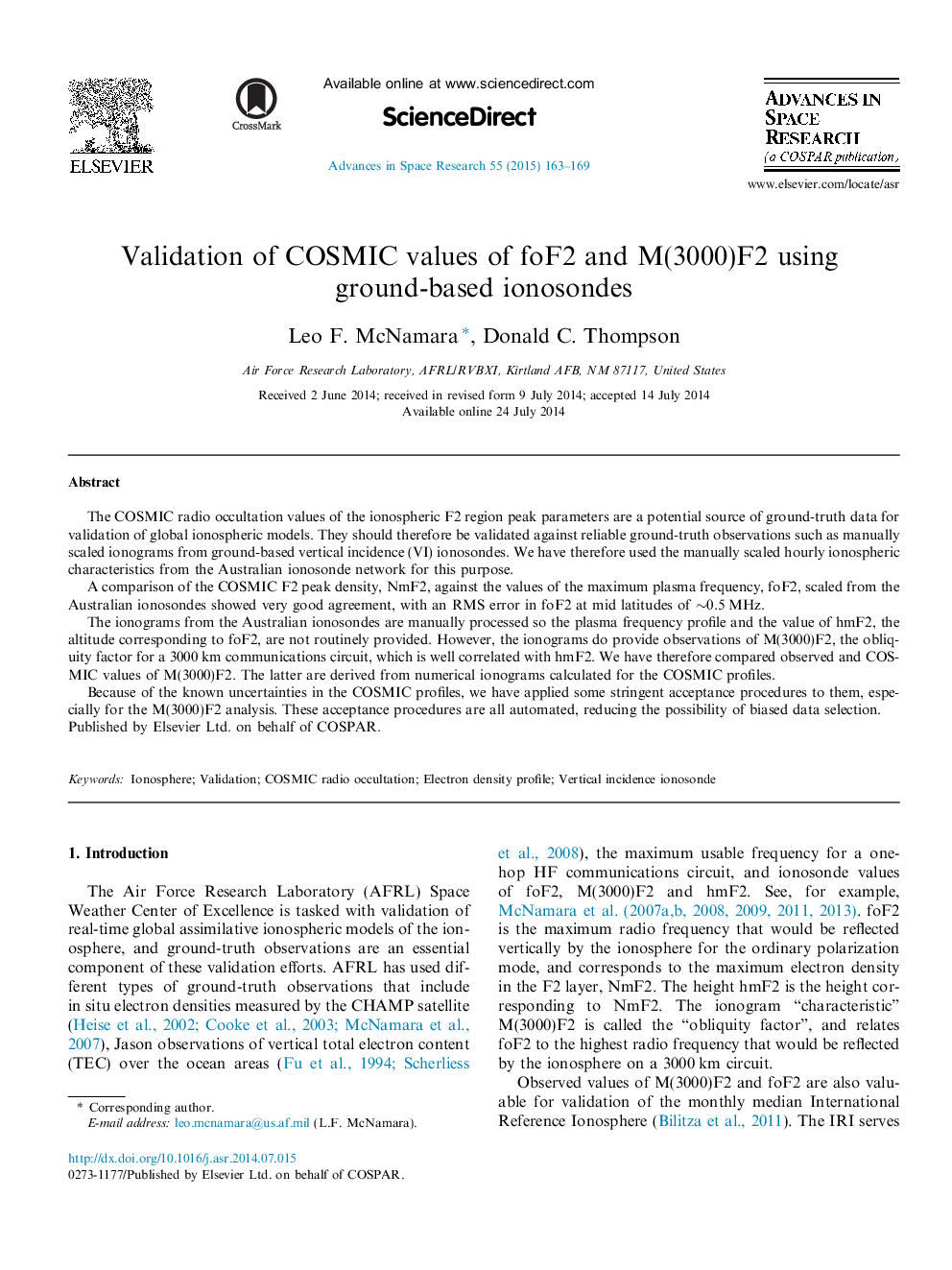| کد مقاله | کد نشریه | سال انتشار | مقاله انگلیسی | نسخه تمام متن |
|---|---|---|---|---|
| 1764121 | 1020043 | 2015 | 7 صفحه PDF | دانلود رایگان |

• COSMIC electron density profiles have been investigated as ground truth for the validation of global ionospheric models.
• COSMIC values of foF2 and obliquity factor M(3000)F2 have been compared with values from vertical incidence ionograms.
• Good agreement was found with foF2, but not with M(3000)F2.
• The latter result suggests that the COSMIC profiles are of doubtful use for model validation.
The COSMIC radio occultation values of the ionospheric F2 region peak parameters are a potential source of ground-truth data for validation of global ionospheric models. They should therefore be validated against reliable ground-truth observations such as manually scaled ionograms from ground-based vertical incidence (VI) ionosondes. We have therefore used the manually scaled hourly ionospheric characteristics from the Australian ionosonde network for this purpose.A comparison of the COSMIC F2 peak density, NmF2, against the values of the maximum plasma frequency, foF2, scaled from the Australian ionosondes showed very good agreement, with an RMS error in foF2 at mid latitudes of ∼0.5 MHz.The ionograms from the Australian ionosondes are manually processed so the plasma frequency profile and the value of hmF2, the altitude corresponding to foF2, are not routinely provided. However, the ionograms do provide observations of M(3000)F2, the obliquity factor for a 3000 km communications circuit, which is well correlated with hmF2. We have therefore compared observed and COSMIC values of M(3000)F2. The latter are derived from numerical ionograms calculated for the COSMIC profiles.Because of the known uncertainties in the COSMIC profiles, we have applied some stringent acceptance procedures to them, especially for the M(3000)F2 analysis. These acceptance procedures are all automated, reducing the possibility of biased data selection.
Journal: Advances in Space Research - Volume 55, Issue 1, 1 January 2015, Pages 163–169